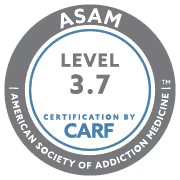Table of Contents
The success rate of rehab programs in California varies based on the type of treatment, program length, and level of aftercare. On average, 40% to 60% of individuals who complete a structured rehab program maintain sobriety for at least one year, according to data from the National Institute on Drug Abuse (NIDA).

What Defines “Success” in Rehab?
Rehab success isn't measured solely by complete abstinence. Clinicians and researchers often evaluate success using:
- Reduction in substance use
- Improvement in mental health
- Stable employment or housing
- Decreased hospital or ER visits
- Reduced legal involvement
- Increased quality of life
This broader view reflects the complex, chronic nature of addiction—where recovery is often nonlinear and ongoing.

Factors That Influence Rehab Success in California
Several key factors determine how effective rehab is for a particular individual:
Length of Stay
- Programs lasting 90+ days show significantly higher success rates than shorter ones
- Longer treatment allows for deeper behavioral change and better relapse prevention planning
Aftercare Participation
- Patients who complete rehab and enroll in aftercare—such as sober living, outpatient therapy, or alumni groups—are 50–80% more likely to remain sober long term
Level of Support at Home
- A safe, supportive home environment dramatically improves rehab outcomes
- Family involvement in therapy is correlated with higher retention and post-treatment stability
Co-occurring Mental Health Conditions
- Dual diagnosis treatment addresses underlying issues like depression or anxiety, increasing success
- Programs that fail to treat co-occurring disorders tend to see higher relapse rates

Average Rehab Success Rates by Program Type
These figures reflect national trends but apply broadly to California’s treatment landscape, especially among licensed and accredited rehab centers.
Do Luxury Rehabs Have Higher Success Rates?
Not automatically. While luxury rehab in California often provides better accommodations, the success rate depends on clinical excellence, not just environment. That said, private centers typically offer:
- More individualized therapy
- Smaller staff-to-patient ratios
- Integrated mental health care
- Better continuity with aftercare
These features contribute to improved outcomes when combined with patient commitment.
Explore how an accredited rehab in California structures its programs to prioritize long-term recovery and evidence-based practices.
Why Success Metrics Vary by Person
Success looks different for each individual. While one person may remain abstinent long-term, another may reduce harmful use, reconnect with family, and rebuild employment—all important recovery milestones.
Relapse is not a sign of failure. Addiction is a chronic illness, and relapse rates are similar to conditions like diabetes or hypertension. Ongoing care is the key.
Related Questions About Long-Term Recovery in California
A rehab’s success rate is closely tied to what happens before, during, and after treatment. Here are related questions that complete the picture:
How Much Does Rehab Cost in California?
Cost varies based on program length, level of care, and insurance. Facilities offering evidence-based treatment with robust aftercare—factors that boost success—may range from $10,000 to $60,000+.
How Long Is the Average Rehab Program in California?
Most successful programs last at least 90 days. Shorter stays can work with proper follow-up care, but longer durations are associated with higher success rates.
How Does Insurance Cover Rehab in California?
Insurance coverage improves access to longer and more comprehensive care. Most private plans and Medi-Cal include some form of residential or outpatient addiction treatment.












